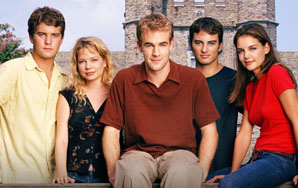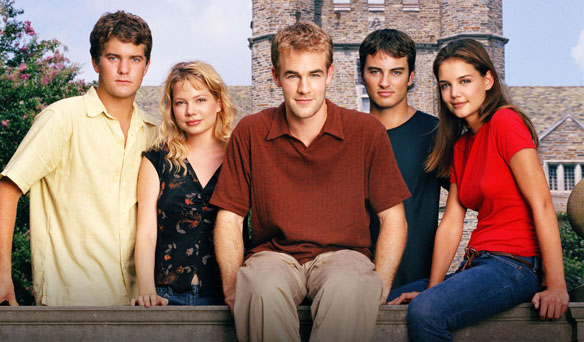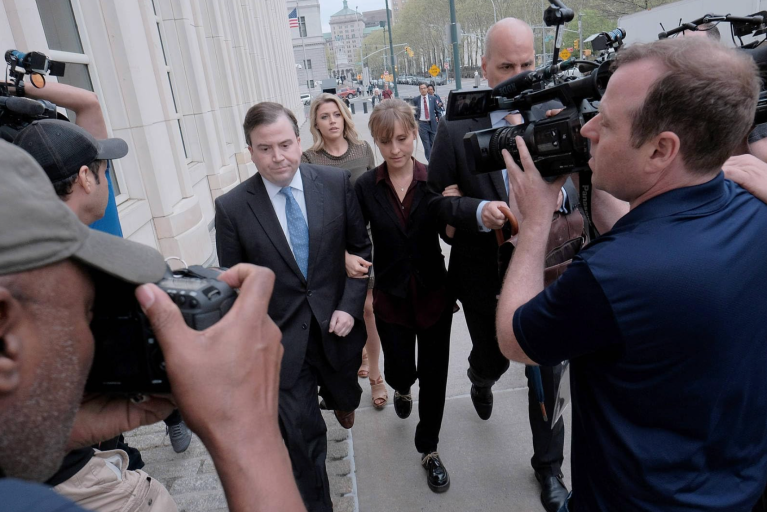
The Time I Worked At Abercrombie & Fitch
Back in the earlier 2000s, in my local town, getting offered a job at Abercrombie & Fitch was essentially like winning the retail nomination for prom queen.
By Jess Hyman


Back in the earlier 2000s, in my local town, getting offered a job at Abercrombie & Fitch was essentially like winning the retail nomination for prom queen. The clothes weren’t interesting or particularly stylish but the stigma attached to Abercrombie in its hey-day was that of a dewy-faced gorgeous summer lifeguard fresh off the beaches of Connecticut. And, regretfully, at age 17, I wasn’t totally against that stigma.
The fact that they “recruited” people for jobs that were basically folding clothes and standing around doing nothing at our local mall was laughable in itself, but it was just another brilliant marketing ploy to promote the idea that working for their brand was a privilege. It was something to be desired and attained only by the attractive few. It was the country club of retail. Looking back and now having spent 6 years in advertising, it was actually pretty brilliant.
I would frequent the mall pretty often, as there wasn’t much else to do around town, and I had actually been offered a job at Abercrombie several times. At the time, I was working elsewhere but I let those offers act as small victories, and sadly they became satisfying self-esteem boosters within an otherwise catty high school existence where girls loved to bring other girls down.
One time during winter break of my freshman year of college, I went to the mall with my attractive friend with whom I had worked at a summer camp the year prior. We were both offered positions to help out during our time home from school. Despite the previous offers, this time we decided — why not? They couldn’t possibly need us that often and was there really any harm in picking up some extra pocket change for folding overpriced sweatshirts? And hey! A discount on $150 jeans!
I should mention that the funniest part of the whole thing was that I was, by no means, an “Abercrombie” girl lookswise. I wore the clothes, sure. An oversized Henley/camisole combo and “distressed” jeans for which I embarrassingly overpaid. But I had long dark brown hair that I straightened. No “natural” beach waves here. I wore eyeliner and bronzer. I liked black clothing. I was thin but not model-thin, and I definitely didn’t have the waspy Anglo look. Granted, I had the wardrobe to make it work — I’d shopped my share of times at Abercrombie over the years, but as I began to find my own style freshman year of college, I realized, yeah, this wasn’t it.
Regardless, we took the jobs and decided to make the best of it. On our first day, we were given a handbook of the “rules” of the job by the extremely attractive manager. This is where it gets good. We were essentially told that we needed to “embody the lifestyle and models of the Abercrombie brand.” Translated: be attractive. Stay attractive.
We were told not to help customers. We were told that they would nag us, try to get us to go into the back to find sizes that weren’t on the floor – but we were told always to tell them that “if it wasn’t on the floor, we didn’t have it.” It was implied that, by not helping customers, we’d seem even more aloof and unattainable, thereby encouraging customers to try even harder to be like us by buying the clothing.
Even at the time I was shocked that this type of thing was legal. And I’m sure the way it was written allowed for a flexible interpretation, but there was no question about our role when it was relayed to us at orientation. There was also the insinuation that “only attractive people work in the front.” When we met other staffers, if they worked stock in the back room, it was because they were unattractive and/or didn’t fit the mold of the Abercrombie lifestyle (read: not white, not young, not thin).
Now, I don’t want to put Abercrombie up as a racist, elitist company in its entirety. This was one store, likely led by one or two elitist douchebag managers who used their fruitless position of power to interpret the manual in the way they pleased. That said, the language in the manual was definitely there and easily interpreted. The brand wanted to preserve its “distressed country club” appeal and so it pushed its agenda accordingly.
Other manual rules and regulations:
No black clothing – Abercrombie doesn’t sell anything black and therefore “black” does not appropriately represent their brand
No obvious or heavy eye make-up, no heavy duty skin makeup or colorful products
No facial hair for men
Must be wearing all Abercrombie clothes during shift
Fingernails must not be more than ¼ of an inch past your fingertips
Fingernail and toe nail polish should be natural tones
No visible piercings or tattoos
No obvious highlights or hair dyes – hair should look natural
No bold jewelry; no large or dangly earrings
Hair should be kept long when possible
No heavy fragrances unless, of course, it’s a signature A&F fragrance
While some of these can probably be said for various retail stores that have a brand image they are trying to maintain, most of these are outlandish, if not outright discriminatory. On top of this, they encouraged us to recruit “attractive” customers that represented the “Abercrombie lifestyle.” If a less attractive candidate asked if the store was hiring, we were told to tell them no but that they could apply for other positions on the company website.
Needless to say, I spent about a week doing this before I realized a few things. First and foremost — I broke most of these rules by just showing up. I wore make-up, I wore black, I wore dark nail polish colors. I didn’t even understand why they offered me the job. If I showed up make-up less and au-naturale the way they wanted me to, they wouldn’t have hired me. Clearly I discovered these rules were “flexible” so long as you weren’t taking it to the “extreme.” In other words, so long as you weren’t goth or had trashy streaks in your hair or had make up on and still looked unattractive, you were okay. Not ideal, but okay.
Secondly, I realized that I kind of sucked for doing this. While, sure, I didn’t make the rules, I was (loosely) following them and in the process, probably making other people feel badly about themselves. Am I going to sit here and tell you that, at the time, I was totally self-aware and had conviction and therefore stormed out citing horrible discriminatory practices and an offensive corporate focus on physical appearance? Of course not. I wasn’t a saint. Naturally, at age 18 when I was still very young and highly insecure, it felt good to be “selected” as someone to work for a desirable and attractive brand. In fact, I didn’t even realize until looking back on this just how fucked up the employee practices were. For something as benign and meaningless as a part-time job over college break, this was a lot of sociological turmoil. All this said, I did realize that the job (and myself) were pretty much jokes. And the more I stood there, watching half-naked guys dance around the store in Christmas flannels trying to evoke envy in the passerbys, I did feel like a total wannabe and more importantly, a fraud. Because – let me tell you – see me without my defiant black eyeliner and blow-dried hair? I definitely wouldn’t qualify for your “brand” of beauty.
Needless to say, I quit after a week. All social issues aside, something about folding clothes, ignoring people I should’ve been helping and spending more time figuring out the outfit I was going to wear to work than the outfit I would wear out on the weekends got tiring. Fortunately, that Abercrombie craze has since died down over the past 10 years but I’ll never forget the absurdity of the employee culture or the gross emphasis they put on the superficial. I think we can all agree we’re happy about its dissipating influence – besides, there’s only so many $40 vintage graphic-tees and $150 pairs of ripped jeans one can own before taking a cold, hard look in their closet and realizing it looks like the wardrobe of a homeless Dawson’s Creek extra. ![]()











